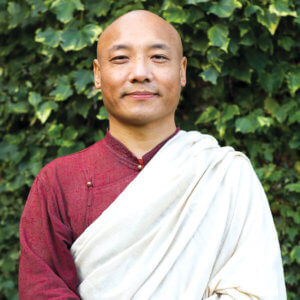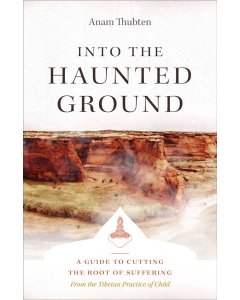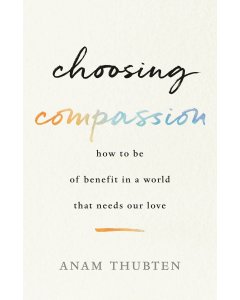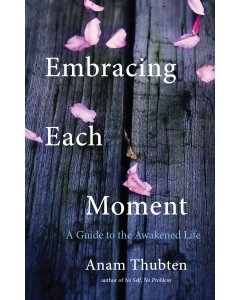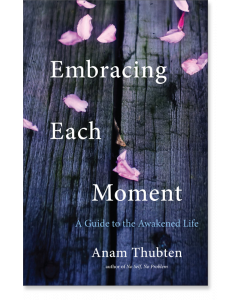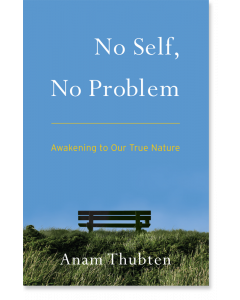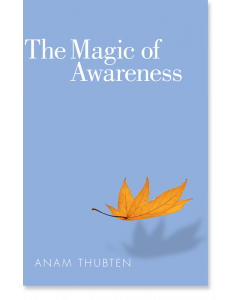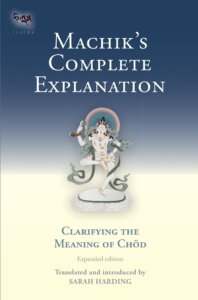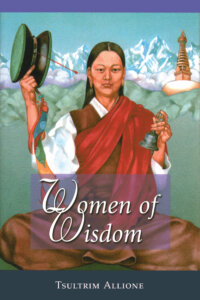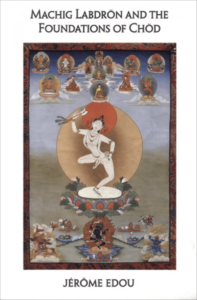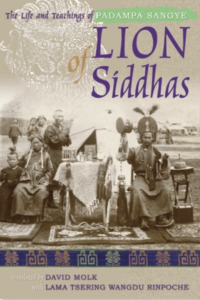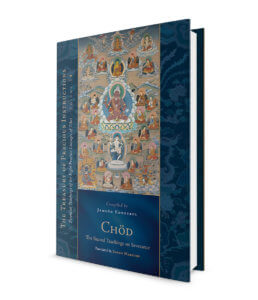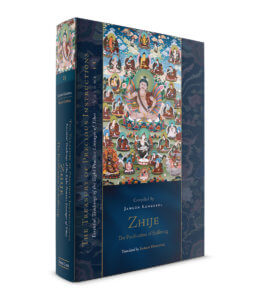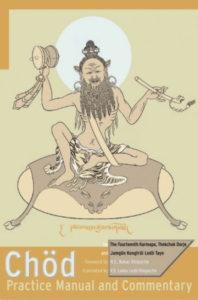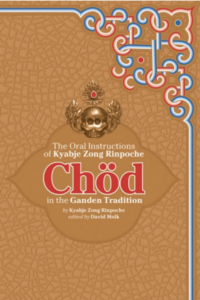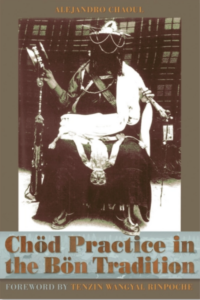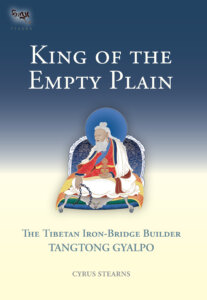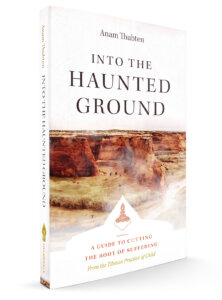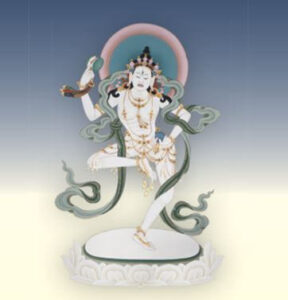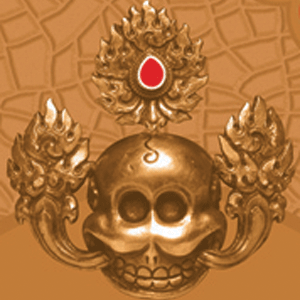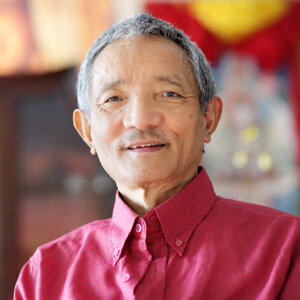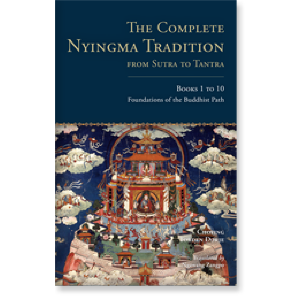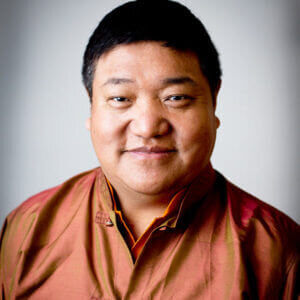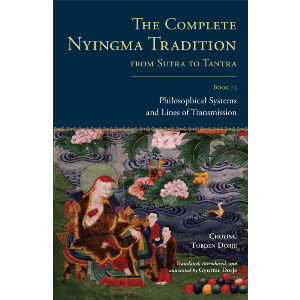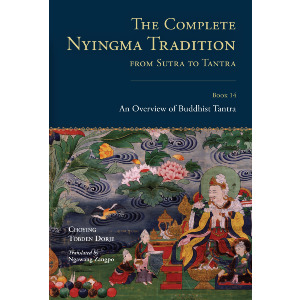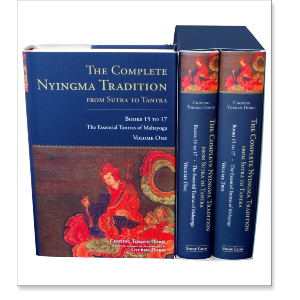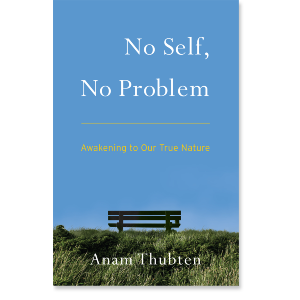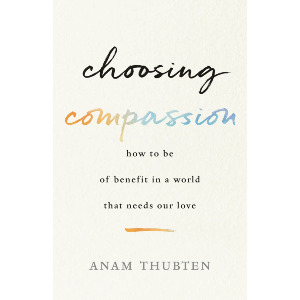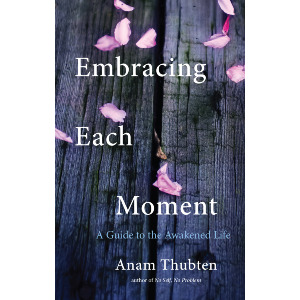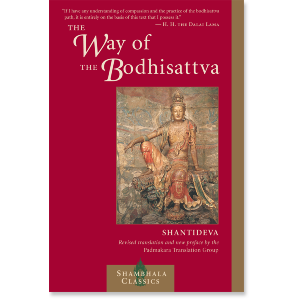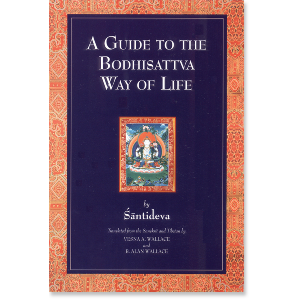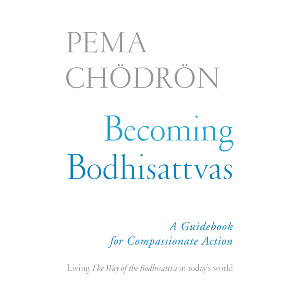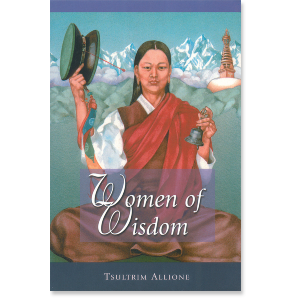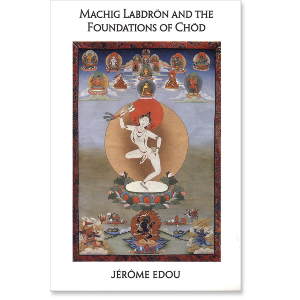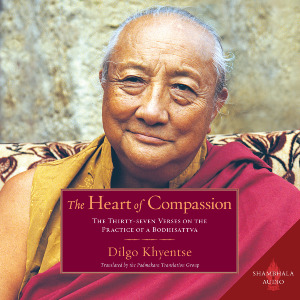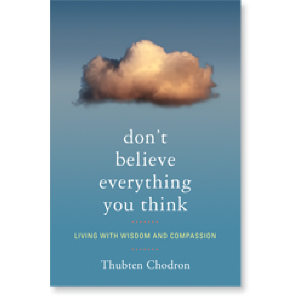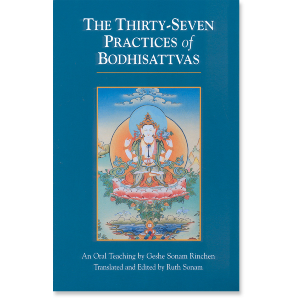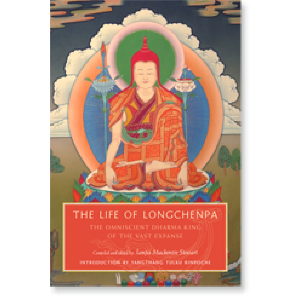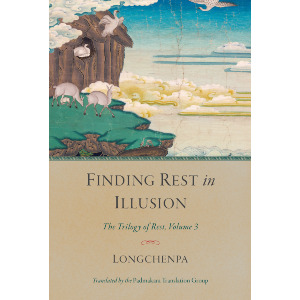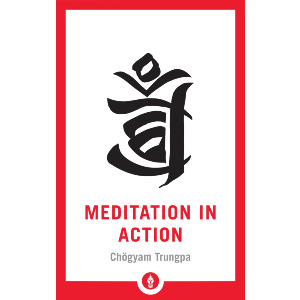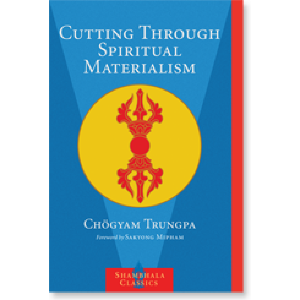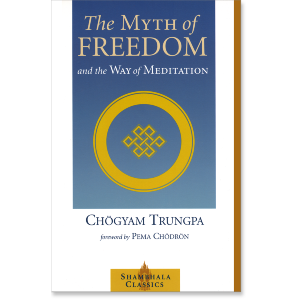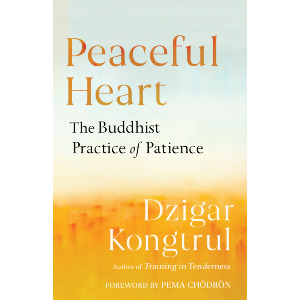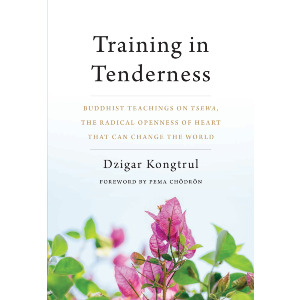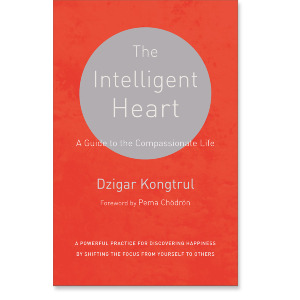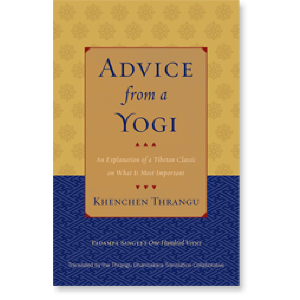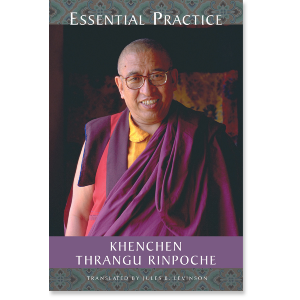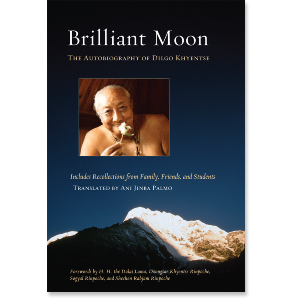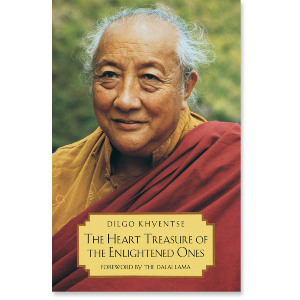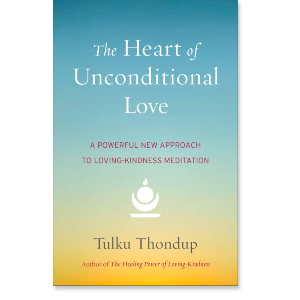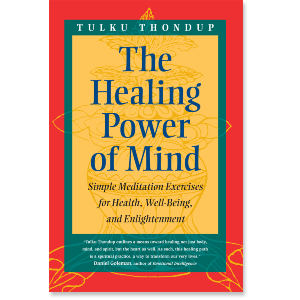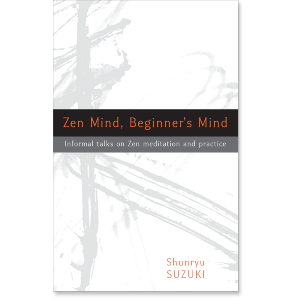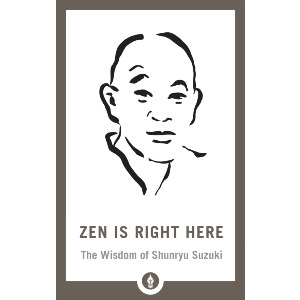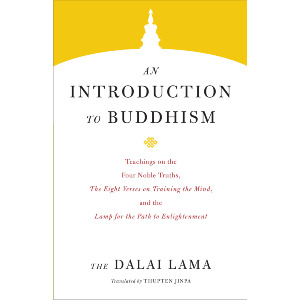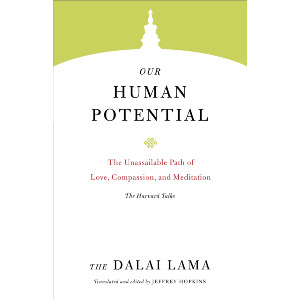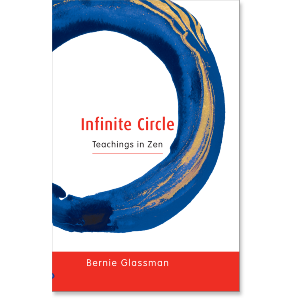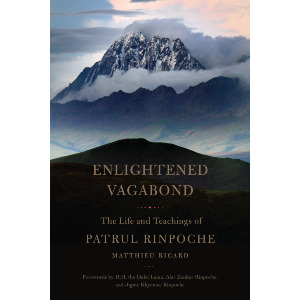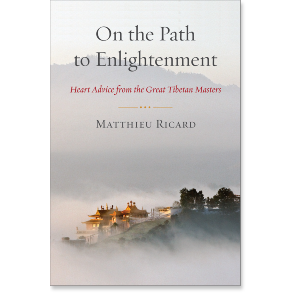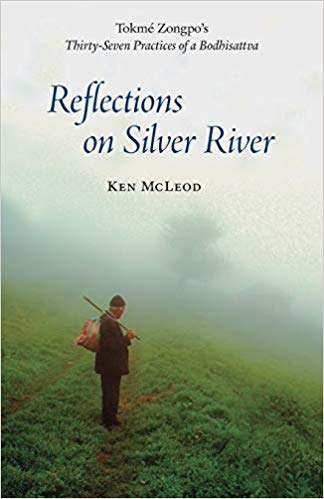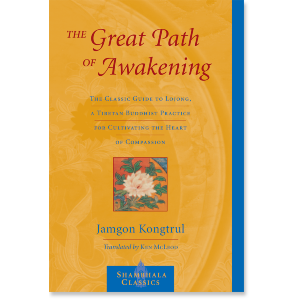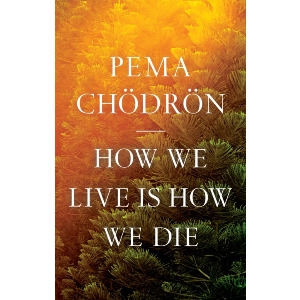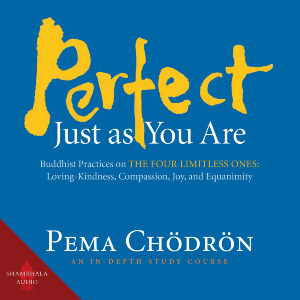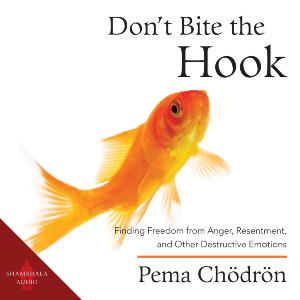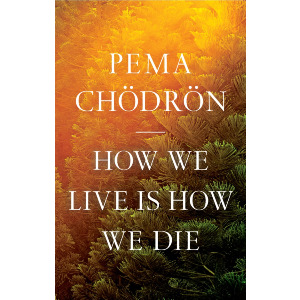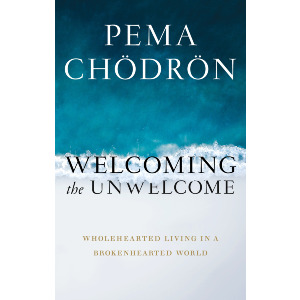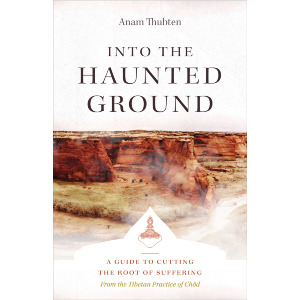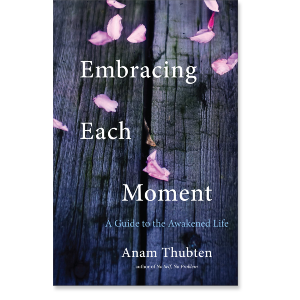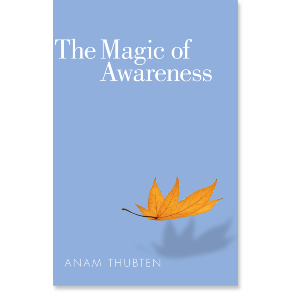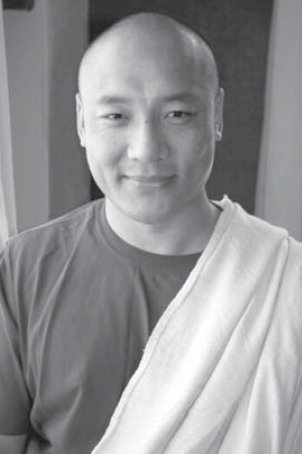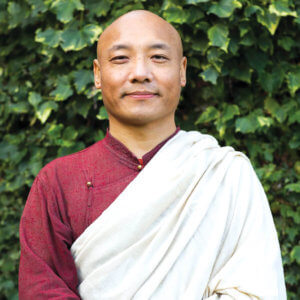

Anam Thubten
Anam Thubten grew up in Tibet and undertook Buddhist training in the Nyingma tradition at an early age. He has been teaching in the West since the 1990s and is the spiritual advisor and Dharma teacher for the Dharmata Foundation.
Anam Thubten
GUIDES
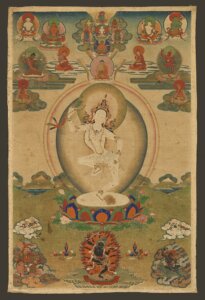
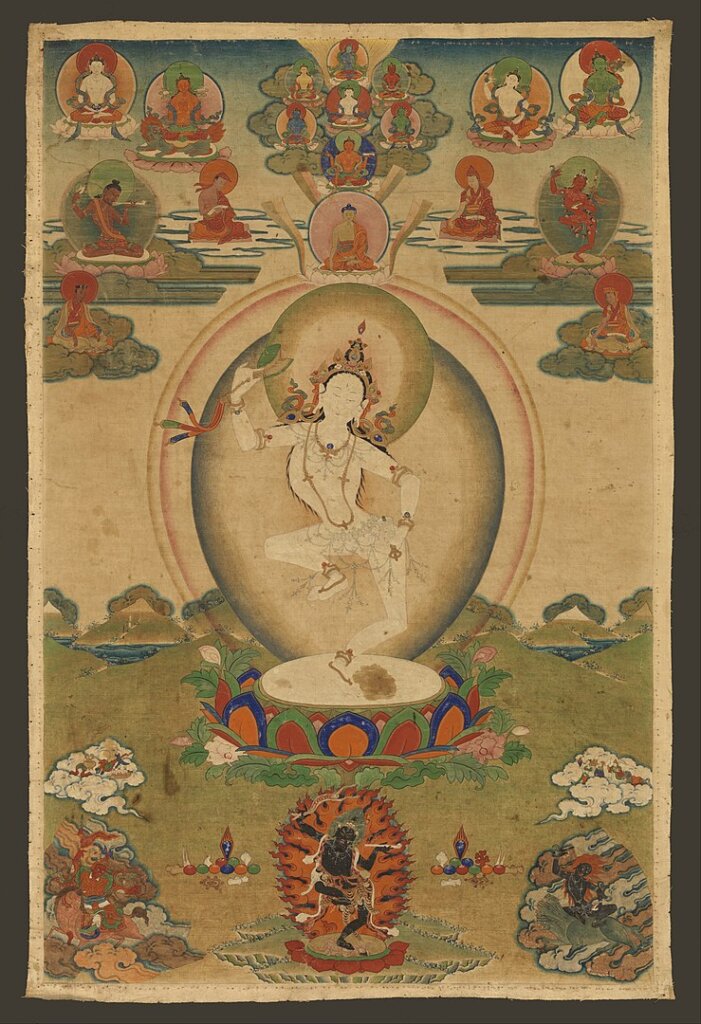
Chöd, often pronounced "chö," is a meditative practice found in both the Buddhist and Bön traditions of Tibet. Chöd, translated literally as "cutting through," incorporates chanting, music, and visualization aimed as cutting through hindrances and obscurations that cloud ultimate wisdom and understanding of emptiness—the ultimate nature of reality. Closely linked with the teachings of the Prajñāpāramitā Sūtras, or "Perfection of Wisdom Sutras," Chöd enables the practitioner to cut through their anger, jealousy, arrogance, fear, and attachment as well as the dualism of seeing their self as a separate entity in order to transmute undesirable circumstances into opportunities for awakening.
In short, Chöd involves offering ones body (through visualization, music, and chanting) to various guests including Buddhas, dakinis, gods and demons as a means to satisfy karmic debt and the causes of bondage in samsara (ie., obscurations and hindrances). In this regard, offering the body—our primary source of attachment—serves as a source of liberation from clinging to self cherishing.
Below you will find books from important Chöd figures including Machig Labdron and Padampa Sangye in addition to books from various traditions of Chöd and modern teachers of Chöd as well as related articles on Chöd.
Machig Labdron
In the introduction to Machik's Complete Explanation, translator Sarah Harding begs the question is Machik a "woman" or "goddess" or something more? Admiring the life and legacy of Machik, Harding writes:
"Machik is the ḍākinī of timeless wisdom, the birth mother of all past, present, and future buddhas.” This is the very first sentence, after the homage, of the current text, Clarifying the Meaning of Chöd, a Complete Explanation of Casting Out the Body as Food, or Machik’s Complete Explanation. How does the ineffable become a woman, or a woman become ineffable? Who was the woman behind this book Stories of female saints are exceptional enough in the history of Tibetan Buddhism, or in any major religion for that matter, to make this story rare and precious. But even among the few that we can discover, the figure of Machik Lapdrön stands out as unique for several reasons. According to the legend, in her previous life she was an Indian man who made the unusual choice to take rebirth as a woman in Tibet. She was inspired primarily by the Prajñāpāramitā, the Great Mother Perfection of Wisdom that is the manifestation of the ultimate feminine. Unlike other female saints of Tibet, she was not a lama’s consort, a nun, or a hermit, but a mother who nurtured the spiritual life of her children, and a self-styled beggar woman. Above all, she was the only Tibetan, male or female, who was the progenitor of a distinct tradition that spread back into the Buddhist motherland of India, a cause for great national pride in Tibet. And she left a tremendous legacy of her own teachings, more than any other woman."
Machik's Complete Explanation: Clarifying the Meaning of Chod (Expanded Edition)
Fear, anger, and negativity are states that each of us have to contend with. Machik's Complete Explanation, the most famous book of the teachings of Machik Lapdrön, the great female saint and yogini of eleventh- to twelfth-century Tibet, addresses these issues in a practical, direct way.
Machik developed a system, the Mahamudra Chöd, that takes the Buddha's teachings as a basis and applies them to the immediate experiences of negative mind states and malignant forces. Her unique feminine approach is to invoke and nurture the very "demons" that we fear and hate, transforming those reactive emotions into love. It is the tantric version of developing compassion and fearlessness, a radical method of cutting through ego-fixation.
This expanded edition includes Machik Lapdrön's earliest known teaching, the original source text for the tradition, The Great Bundle of Precepts on Severance (Chöd). This pithy set of instructions reveals that the teachings of the perfection of wisdom are the true inspiration for Chöd. It is beautifully clarified in a short commentary by Rangjung Dorje, the Third Karmapa.
Throughout Machik's Complete Explanation it becomes evident that Machik Labdron represents not only the qualities of wisdom exemplified in the Prajnaparamita, but also qualities of womanhood and motherhood including rearing children since Machik was herself a mother. In this regard, Machik paved a new path for all Buddhist practitioners, including women and mothers who have historically lacked role models and inspiration.
Stories like that of Machik provide important context for female practitioners who often lack representation in the Tibetan Buddhist field. Another great book which includes a biography of Machik along wither several other female practitioners is Tsultrim Allione's Women of Wisdom.
Women of Wisdom explores and celebrates the spiritual potential of all women, as exemplified by the lives of six Tibetan female mystics. These stories of great women who have achieved full illumination, overcoming cultural prejudices and a host of other problems which male practitioners do not encounter, offer a wealth of inspiration to everyone on the spiritual path.
In this revised and expanded edition, Tsultrim Allione's extensive autobiographical preface and introduction speak directly to the difficulties and triumphs of women in the West who pursue a spiritual life, as she shares her own stories and experiences. Women of Wisdom offers valuable insights to all those interested in women's spirituality, regardless of background or tradition.
This new edition includes Tsultrim's expanded autobiography, covering the last fifteen years since the first edition appeared.
More on Machig Labdron
Machig Labdron and the Foundations of Chod
By Jerome Edou
Machig Labdron is popularly considered to be both a dakini and a deity, an emanation of Yum Chenmo, or Prajnaparamita, the embodiment of the wisdom of the buddhas. Historically, this Tibetan woman, a contemporary of Milarepa, was an adept and outstanding teacher, a mother, and a founder of a unique transmission lineage known as the Chöd of Mahamudra. This translation of the most famous biography of Machig Labdron, founder of the unique Mahamudra Chöd tradition, is presented together with a comprehensive overview of Chöd's historical and doctrinal origins in Indian Buddhism and its subsequent transmission to Tibet.
Chöd refers to cutting through the grasping at a self and its attendant emotional afflictions. Most famous for its teaching on transforming the aggregates into an offering of food for demons as a compassionate act of self-sacrifice, Chöd aims to free the mind from all fear and to arouse realization of its true nature, primordially clear bliss and emptiness.
Padmapa Sangye: "The Father of Chod"
Although it's argued that Machik was the founder of Chod in Tibet—specifically the Mahamudra Chöd lineage, the 11th century Indian Siddha, Padampa Sangye, is believed to have been one of her teachers. He's also known for his teachings on Zhije or the pacification of suffering (see below).
Lion of Siddhas: The Life and Teachings of Padampa Sangye
By Padampa Sangye
Translated by David Molk
Translated by Lama Tsering Wangdu Rinpoche
Best known as Machig Labdron's teacher, the Indian mahasiddha Padampa Sangye is counted as a lineage guru by all schools of Tibetan Buddhism. He brought the lineage of Chöd to Tibet, carried the Buddha's teachings to China, and is even asserted in the Tibetan tradition to have been the legendary Bodhidharma. Padampa Sangye's teaching methods were unorthodox and sometimes extreme. This transcendent and irascible teacher encouraged his disciples to disregard social conventions, disdain social contacts, and go beyond their cultural conditioning. He inspired innumerable highly realized disciples, many of whom were women. Lion of Siddhas presents two extraordinary texts: a biography of Padampa Sangye, and a rare collection of his verbal and nonverbal teachings called Mahamudra in Symbols, recorded by his chief Tibetan disciple almost a thousand years ago. Both are previously untranslated.
Chod and Zhije in the Dam-ngak Dzö "Treasury of Precious Instructions"
The Treasury of Precious Instructions or Dam-ngak Rinpoché Dzö by Jamgön Kongtrul Lodrö Taye, one of Tibet’s greatest Buddhist masters, presents the essential teachings of practice lineages that come from India and Tibet including Chod and Zhije, the second of which can be traced back to Padapa Sangye (aka "Dampa Sangye").
$59.95 - Hardcover
Chod: The Sacred Teachings of Severance
By Jamgon Kongtrul Lodro Taye
Translated by Sarah Harding
In this, the fourteenth volume, Kongtrul compiles the teachings on Severance, or Chöd. It includes some of the tradition’s earliest source scriptures, such as the “grand poem” of Āryadeva, and numerous texts by the tradition’s renowned founder, Machik Lapdrön. Kongtrul also brings together the most significant texts on the rites of initiation, empowerments for practice, and wide-ranging instructions and guides for the support of practitioners. Altogether, this quintessential guide to Severance offers vast resources for scholars and practitioners alike to better understand this unique and remarkable tradition—the way of severing the ego through the profound realization of emptiness and compassion.
$39.95 - Hardcover
Zhije: The Pacification of Suffering
By Jamgon Kongtrul Lodro Taye
Translated by Sarah Harding
In this volume, Kongtrul presents a diverse corpus of texts from the Zhije (Pacification) tradition that trace especially to the South Indian master Dampa Sangye (d. 1117), whose teachings are also celebrated in the Chöd (Severance) tradition. It includes source scriptures by Dampa Sangye, empowerments by Lochen Dharmashrī, and guidance by Dampa Sangye, Lochen Dharmashrī, and Sönam Pal. Also included are lineage charts related to the transmission of Zhije teachings as well as detailed notes and an orientation to the texts by translator Sarah Harding.
In the video below translator Sarah Harding discusses Zhije and Chod.
Other Commentaries by Jamgön Kongtrul
Chod Practice Manual and Commentary
By The Fourteenth Karmapa, Thekchok Dorje
By Jamgon Kongtrul Lodro Taye
Translated by V.V. Lama Lodo Rinpoche
This splendid resource for Chöd practitioners contains the Chöd sadhana written by the Fourteenth Karmapa. This daily practice text is given in three versions: Tibetan, a phonetic rendering of the Tibetan, and English translation. Jamgön Kongtrül's commentary on the sadhana supplies necessary amplification and clarification; it is given both in English and Tibetan. An important feature of the commentary is the inclusion of illustrations for the different stages of visualization discussed within the commentary. All in all, this is an essential practice tool and reference guide for the serious Chöd practitioner.
Chod in Other Tibetan Traditions
By Kyabje Zong Rinpoche
Edited by David Molk
In Chöd in the Ganden Tradition, we encounter not only the life and teachings of one of the greatest Tibetan masters in modern times, but also instructions in one of the most interesting Tibetan techniques for working with basic fears, applicable to Chöd practitioners from all lineages. The instructions are offered with the engaging directness, wit, and stories for which Rinpoche was legendary. He tells miraculous accounts of the Ganden Oral Lineage masters and then gives detailed explanations of the actual practice, including such topics as the degree of fear necessary for Chöd practice, and how to remember dream and death morning, noon and, night. Also provided are the Chöd sadhanas for chanting in English.
Chod Practice in the Bon Tradition
The dramatic practice of chöd, in which the yogin visualizes giving his or her own sacrificed body to the gods and demons as a way to cut the attachment to self and ordinary reality, offers an intense and direct confrontation with the central issues of the spiritual path. The chöd practices of the Bön tradition, a tradition that claims pre-Buddhist origins in the mysterious western lands of Zhang-zhung Tazig and Olmolungrig, are still almost entirely unknown.
Though not specifically a book about Chöd, Cyrus Sterns' King of the Empty Plain offers a detailed study of the life and legacy of Tangtong Gyalpo, the famous Buddhist sage, physician, blacksmith, architect, and Chöd master known as Chakzampa, the "Iron Bridge Maker." In fact, in his introduction he writes:
The most closely guarded esoteric teachings of Tangtong Gyalpo concern the practice of Chöd, or Severance, about which he never wrote. During the course of his studies and travels, Tangtong studied all the systems of Chöd in Tibet. From Lhadongpa Sönam Chokpa, he received the transmission of the Chöd practices taught by Padmasambhava and passed down in the Northern Treasure tradition of the Nyingma School, which were based on the treasures of Gökyi Demtruchen (1337−1408). However, it was a vison of Vajrāvārahī appearing to Tangtong as Machik Labdrön (eleventh–twelfth centuries) in the Kashmiri cemetery of Rāmeśvara that was to be most significant. Machik Labdrön was the mother of the most influential Chöd system in Tibet, and the visionary teachings she transmitted to Tangtong form the basis of Tangtong’s Oral Transmission (Thang stong snyan brgyud), also known as the Oral Transmission of Machik’s Secret Behavior (Ma gcig gsang spyod snyan brgyud), which has been passed down without interruption to the present day. Tangtong specifically practiced Chöd to bring the local spirits under his control long before beginning his first construction projects.
Sterns' book includes a complete translation of the most famous Tibetan biography of Tangtong Gyalpo, as well as the Tibetan text and English translation of a unique early manuscript describing his miraculous death. The text is further enriched with ten color plates and seventy-seven black-and-white illustrations. Read More
Teachings from Modern Chod Masters
Into the Haunted Ground: A Guide to Cutting the Root of Suffering
By Anam Thubten
In Into the Haunted Ground, Anam Thubten invites us to embrace every aspect of our lives, from the most difficult to the most joyful. For those of us who feel caught in endless anxious thoughts and stuck in personal relationships, Anam Thubten offers a direct and practical approach to dismantle our conceptual fixations, reveal the deeper habits that motivate us, and step into the immediate open spaciousness that can heal ourselves and the world.
Weaving together personal stories with philosophical explanations, Anam Thubten offers swift and straightforward methods to cut through old habits that no longer serve our best interests or reflect our true nature. Suitable for beginners and experienced practitioners alike, this book presents the core lessons of the Tibetan practice of Chöd as a fundamental wisdom that is accessible to any of us willing to enter the “haunted grounds” of our own minds.
Also available as an audiobook! See below.
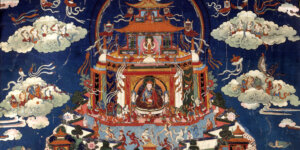
Praise for the Complete Nyingma Tradition

Explore the Complete Nyingma Tradition
Home Page of The Complete Nyingma Tradition
The Books of The Complete Nyingma Tradition
Choying Tobden Dorje and the Story Behind the Complete Nyingma TraditionIn Memorium: Alak Zenkar Rinpoche reflects on Lama Tharchin Rinpoche and the Complete Nyingma Tradition
Lama Sonam on The Complete Nyingma Tradition
> Praise for The Complete Nyingma Tradition

Translators include Gyurme Dorje, Ngawang Zangpo, and Heidi Nevin. Lama Tsering Gyaltsen has also been instrumental in various aspects of the project.
"This monumental treatise, covering both common and esoteric Buddhist lore, was composed by Choying Tobden Dorje, a most illustrious scholar and accomplished sage. Fortunately, among his voluminous books, this, his masterwork, has survived and has been carefully translated true to the original. It will open the eyes of serious readers to the vast spectrum of Buddhist wisdom."—Tulku Thondup Rinpoche
The Complete Nyingma Tradition from Sutra to Tantra, Books 1 to 10
$49.95 - Hardcover
"The Complete Nyingma Tradition from Sutra to Tantra represents a rare opportunity for readers to obtain a complete map of the Buddha's teachings. It contains very detailed descriptions of the profound and vast teachings of the ground, path, and fruition of both the sutra and tantra traditions. It provides particular emphasis on detailed instructions of the inner tantras of mahayoga, anuyoga, and the precious dzokchen tradition. I highly recommend this book for students who wish to gain a deeper understanding of the complete path to enlightenment."—Orgyen Chowang Rinpoche
The Complete Nyingma Tradition from Sutra to Tantra, Book 13
$39.95 - Hardcover
"The translation of this text is a major milestone in bringing Tibetan Buddhist wisdom to the West. One of the legacies of ancient Tibet is the preservation of vast numbers of the Buddhist scriptures in their most complete and authentic forms. This text is a remarkable example of that. It has the power to reveal the rich traditions of Tibetan Buddhism from its surface to its depth, and it will illuminate the minds of those who have the great good fortune to meet with it."—Anam Thubten
The Complete Nyingma Tradition from Sutra to Tantra, Book 14
$39.95 - Hardcover
We hope you're enjoyed exploring The Complete Nyingma Tradition with our online resource guide. For more information on the current and upcoming publications in this series please refer to the earlier pages of our resource guide including the Home Page of The Complete Nyingma Tradition and The Books of The Complete Nyingma Tradition.
You many also enjoy the following reader guides:
The Complete Nyingma Tradition from Sutra to Tantra, Books 15 to 17
$59.00 - Hardcover

Anam Thubten on Meditation: The Art of Resting
What follows is the entire chapter on meditation from Anam Thubten's No Self, No Problem
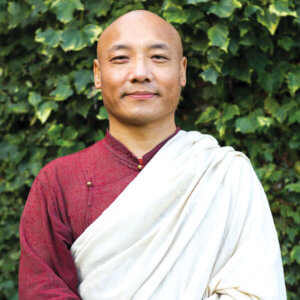
One time Buddha said, “I am beyond coming and going.” This was the most profound teaching that he ever gave. What he meant was that everything is an illusion. That is the truth whether our mind can digest that as truth or not. Even Buddha himself is an illusion. In the same way, when we look into our consciousness we see that our mind is always telling us all kinds of stories. Everything we believe to be reality is nothing more than stories. “I was born in 1950 or 1960. I went to such and such college. I married. I divorced. I had children. I did this and that. I met with a great teacher two years ago and I found the path to liberation.” It’s all a story, all an illusion, imagination, fiction. The truth is that nothing is happening. Therefore we have to make sure that this, the egoic mind, is not just chasing after illusions again.
You may have noticed that we have a tremendous sense of fear and resistance when we believe that we are losing something. We always lose in our lives. We lose our loved ones. We lose our jobs. Sometimes we lose love from other people and sometimes we lose our fantasies. We are constantly losing. Eventually we lose this body too. We lose this entire universe when we lose this body. This is called “death.” Whether we can accept it or not, the truth is that sooner or later we are going to lose everything when we die without any choice. No matter how beautiful our illusions are, they are all illusions.
The beautiful illusion that is unfolding right now will soon be lost. There is not even one single illusion that we can hold on to forever. We are going to lose everything sooner or later. The sense that it will last is only our mind telling us stories. Illusions are unreal. Illusions are mental projections. They don’t have any concrete or inherent reality. When we look, we see that the egoic mind is always perpetuating its tendency to search for illusions, all kinds of illusions. It has done this for many lifetimes.

Realization is the heart of inner awakening. Without that there is no freedom. There is no liberation. Even though we think that we are transforming and that we are getting somewhere, actually we are just having another spiritual high, another spiritual illusion. The truth is that no transformation happens without this realization. So the real question is how can we realize the truth? How can we realize that everything is nothing but illusions, especially when we feel that our suffering is very real? How can we realize that all of the negativities and unwanted conditions such as illness are simply illusions? It is also not always easy to realize that everything is an illusion when we are having a good time.
Sometimes after we meditate we have a glimpse of this truth that everything is an illusion. But when we get off of our cushion and begin to deal with everyday life it is very easy to lose that realization. Sometimes this egoic mind has a tendency to work very hard trying to get somewhere, trying to realize the truth right now. It sounds very good, especially since I have been saying that this realization is the source of freedom. The ego will tell us, “This is good, I’m going to go after spiritual realization. I am going to do everything I can in order to get that as a spiritual reward.” The ego will tell us to search for more knowledge, more esoteric knowledge, more training, and more spiritual complexity. Ego will tell us that the more complicated the spiritual information is and the more difficult the techniques are, the more profound they are. Ego tells us that the harder it is, the better it is. The more nonsense, the more mumbo jumbo there is, the more sacred it is. And therefore our ego sometimes becomes a workaholic, trying to figure out various spiritual training methods and gathering all of this conceptual information. Then it thinks, “Oh, I am really getting somewhere now because I am paying my dues. I am working hard.” But the truth is that it never works that way. Sometimes these spiritual complexities and disciplines can be a hindrance, blinding our consciousness from realizing what is already there.
The Indian mystic Kabir figured out these ego games a long time ago. He pointed out these perilous traps to those who were practicing various spiritual disciplines. He said in one of his poems, “The spiritual athlete often changes the color of his clothes while his mind remains gray and loveless.”
So we might like to ask the question, “What is the perfect path to awakening?” Of course there is no “perfect way” or no “only way” to the path of awakening. I always like to remember the image of Buddha Shakyamuni sitting for six years. This led him to awakening. Therefore, sometimes the best thing that we can do is simply just rest and relax. Ego may tell us, “That’s too simple. Spirituality cannot be simply relaxing. There must be something more than that.” But actually, ultimately it’s all about relaxing. Therefore many Buddhist masters define meditation as the art of resting or the art of relaxing.
When we relax completely we see that all of our thoughts start to dissipate. The egoic mind begins to dissolve automatically. The egoic mind is very powerful and if we try to get rid of it, it doesn’t really work. But when we just sit and relax it dissolves without doing anything.
Somehow we have the idea that the ego is the troublemaker. Especially if we are Buddhist we may believe that the ego is the troublemaker. We have names for the ego like Mara, which means the cosmic devil. That is the worst name you can give to anybody and that is the name given to the ego. Because we have been criticizing and bashing the ego all of these years, we think that we have to fight against it, resist it, and transcend it. The truth is that the more we try to transcend the ego the stronger it becomes. It’s just like when you tell somebody not to think about a monkey. They end up having to think about a monkey. Therefore, sometimes it’s good to just let go of all of the effort of trying to conquer and get rid of the ego and just rest. It is so simple. Everybody knows how to rest.
This kind of message is not really a new message. It’s a very old message, an age-old message. The message is that if we just rest in this natural state of consciousness, in this very present moment, then this awareness, the enlightened mind, often manifests spontaneously. Enlightenment happens unexpectedly, in the same way that we are often struck with wonder when we see whales jumping from the surface of the ocean. They take our breath away. Throughout the ages these kinds of experiences have often been experienced by meditators. This is frequently noted in the Buddhist tradition. The beauty of this is that it doesn’t require any special methodology or any special training. It often happens when we are least expecting it. Inner rest is the sacred ground on which we meet the light of enlightenment. This knowledge is inherent in all of us. That fact is indicated by the beautiful Buddhist metaphor of a hopeless, exhausted traveler who has suddenly and unexpectedly found soothing shade beneath a beautiful tree in the middle of a vast desert. The tree and shade symbolize the Dharma, or the path to enlightenment. In that sense, the path to enlightenment is utterly simple, although it may not always be easy. So there are no true excuses for us not to be ready to experience this mind. Every excuse is totally invalid and simply an example of the ego’s resistance. Actually, we all know how to awaken because we all know how to rest.
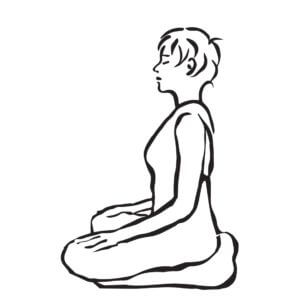
We think that we know how to rest. However, when we meditate we discover that the mind has a tendency to work constantly, to constantly exert effort and to constantly attempt to gain control over reality. Mind is not completely peaceful and relaxed. We find different layers of mind’s effort. This is quite amazing to notice when we sit. At first we think, “Oh, my mind is completely serene and peaceful.” But if we keep paying attention to our consciousness we see that there is a very subtle effort. This is the mind exerting effort, trying to have control over reality. Maybe mind is seeking enlightenment. Maybe mind is trying to transcend the ego. Or we might think, “I don’t like what I am experiencing right now. There is pain in my joints.” Maybe mind is trying to . . . whatever . . . finish the meditation session. Mind is always making up stories. It’s always writing this cosmic script. Therefore the idea of resting completely involves letting go of all of this. Let go of all thought. Let go of all of mind’s effort and completely be in that natural state of your mind, the truth, the “what is,” and then realization is already there.
Sometimes it is very beautiful to just sit. Buddhist training begins by practicing sitting meditation just like the Buddha Shakyamuni, who sat for many years, did. This is the package deal that comes along with being on the Buddhist path. Sooner or later we all have to dedicate an amount of time to sitting. I always encourage everybody to take some time from their everyday lives to just sit. We can sit for twenty minutes, for forty minutes, for one hour, or for a few hours. Sitting meditation involves keeping one’s mouth shut from gossip, idle chatter, and prayer. Prayer can sometimes be just another mental noise or an expression of blind faith and rigid belief systems. Because prayer has often been used in dualistic, fundamentalist religious traditions it is easy for us to misuse it. But this does not mean we should not pray. True prayer is the surrender of all of our concepts, including the idea of a higher power that will either reject or accept the prayer.
Please do not think I’m suggesting that we should not pray. We can pray as much as we want. All I am saying is that it is important to find a time in everyday life for sitting in silence. It’s important for us to have some time every day where we can put everything aside and maintain a special silence. It isn’t just an absence of commotion. It has the power to lead us directly into a deep peace where we can see the way things really are.

So the heart of Buddhist training is to practice meditation. What is meditation? It is simply the art of resting and relaxing. I always like to tell this story. The story is about a monkey who came to the place where Buddha was meditating in a perfect posture. Buddha was in deep silence without any movement so the monkey did not know whether he was alive or dead. Buddha was so relaxed that when the monkey tickled him he did not react. Finally the monkey began to imitate him. The monkey sat in this perfect posture with his crossed legs and his head bent down a little bit. He began to pay attention to his breath and soon he became enlightened on that very spot. This is a beautiful analogy. It is profound and it is also very simple. Basically the story is telling us that the very heart of enlightenment is not complicated. It is not effortful. It is too simple and that’s why it is difficult sometimes to appreciate sitting meditation.
In my own life I have done lots of sitting meditation and I often have thought that sitting meditation was not enough because there were no fireworks. Nothing special was happening. Also when somebody asks us what we have been doing for the past few years, it is very embarrassing to say, “Oh, I was just sitting.” It seems better to be able to talk about the things we have completed. It is nice to present a list of our accomplishments. It can be very embarrassing to tell somebody that we were just sitting. Just sitting for six months or just sitting for a year. It is embarrassing for the ego to report this as so-called spiritual achievement.
Once we discover an affinity for sitting meditation, I believe it means that we are very close to awakening. Try to develop an affinity with sitting meditation. Just sit every day. First there are going to be all kinds of reactions to sitting. Ego is going to try to convince us that just sitting is not good enough. Ego is going to create lots of resistance. Ego will tell us that we are too busy, that we don’t have enough time. We may have difficulty getting up early in the morning. We may experience procrastination. Our ego may tell us, “Today I don’t have time to meditate. Maybe tomorrow I will meditate. Maybe in a month I will meditate.” The ego always creates resistance. It creates gross forms of resistance which are sometimes obvious to see. It also creates subtle forms of resistance which can be more challenging to notice. But they are all aimed at preventing us from developing a regular meditation practice. So in the beginning we may have to force ourselves to meditate. We can make a vow to meditate every day if we are really serious about awakening. If we are really serious about discovering true realization, then we have only one choice and that is to practice meditation every day as the number one priority in our lives. It is often good to make a commitment.

I am speaking about a deep rest, an inner rest, a rest in which we let go of all forms of mind’s effort, including mind’s effort to maintain this illusory self. I am speaking about a deep relaxation in which we are no longer trying to hold on to anything. When we look at a sacred image of Buddha we can make a vow that we are going to meditate every day from now on. We can vow that we are going to carry this awareness and this enlightened mind into each and every moment. We can carry it while we are meditating and also while we are going about the business of our everyday lives.
We can make a commitment and dedicate our lives and our hearts to complete and everlasting awakening. When we make that vow then we find that there is a strength in each of us that allows us to overcome all resistance, all of the strategies set by the ego to jeopardize our path to awakening. This inner strength helps us to overcome fear, insecurity, doubt, and distraction. It helps us overcome everything.
For more books, videos, and articles by or about Anam Thubten see his author page or the Dharmata Foundation website.
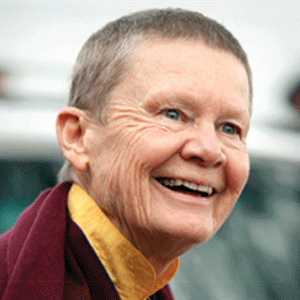
The Teachers of Pema Chodron: A Reader's Guide
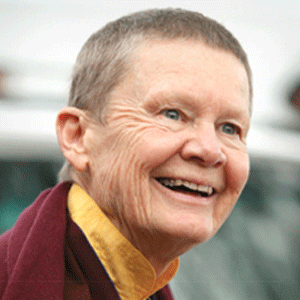 Pema Chödrön refers to many of her teachers and friends in her latest book Welcoming the Unwelcome. For fans of Ani Pema who might be less familiar with some of these figures but want to hear more from her main inspirations, teachers, and role models, this is for you! For those who listened to the audiobook of Welcoming, hearing the narrator and actress Claire Foy pronounce so many masters of Buddhism was a thrill.
Pema Chödrön refers to many of her teachers and friends in her latest book Welcoming the Unwelcome. For fans of Ani Pema who might be less familiar with some of these figures but want to hear more from her main inspirations, teachers, and role models, this is for you! For those who listened to the audiobook of Welcoming, hearing the narrator and actress Claire Foy pronounce so many masters of Buddhism was a thrill.
Buddhist Teachers of Pema Chodron from Long Ago
Some of the most beloved figures and their writings come from the early history of Buddhism in India and Tibet.
Shantideva
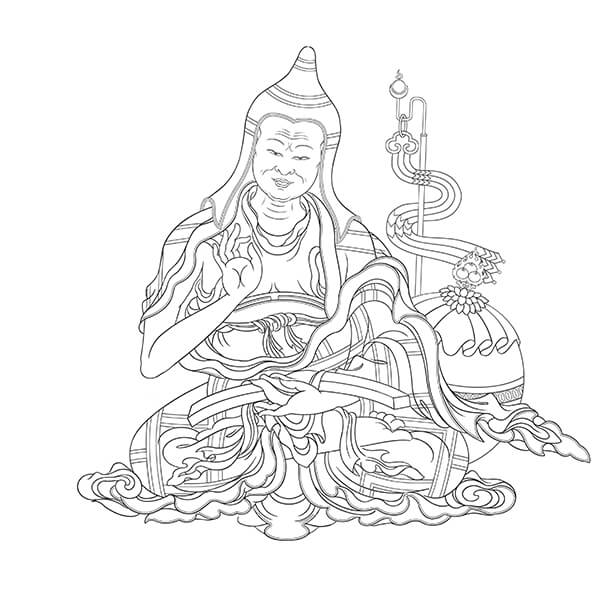
She writes, “I often quote Shantideva, a great Buddhist sage from the eighth century whose writings are widely taught to this day. His advice to keep ourselves from escalating is to ‘remain like a log of wood.’ He lists many provocative situations and then recommends that we don’t act or speak when they come up. Often people interpret this advice as repression. But the point is that remaining like a log interrupts the momentum of our habitual reactions, which usually make things worse. Instead of reacting, we rest with the moving, heightened energy that has arisen. We let ourselves just experience what we’re experiencing. This slows down the process and allows some space to open up. It gives us a chance to discern our inner process and then do something different.”
The best way to explore this is reading the original, then Pema’s commentary Becoming Bodhisattvas, and then looking into it further through our Reader’s Guide on The Way of the Bodhisattva.
Machik Labdron
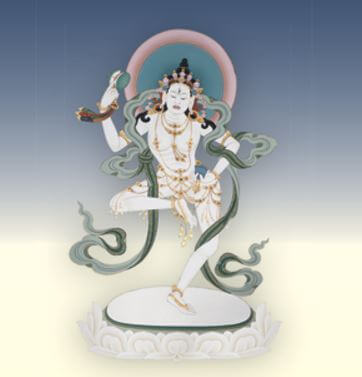
“Machik Labdron, a great Tibetan practitioner who lived in the eleventh and twelfth centuries, had a list of radical suggestions for getting unstuck from our ego-clinging. The first of these is ‘Reveal your hidden faults.’ Instead of concealing our flaws and being defensive when they are exposed, she counseled us to be open about them.”
We have a dedicated page on Chod that presents the dozens of books, articles, and videos on Machik and the practice of Chod. Some of these are pretty advanced, but two great places to start are Machig Labdron and the Foundations of Chod and Tsultrim Allione’s Women of Wisdom.
Thogme Zangpo
Thogme Zangpo, the beloved fourteenth-century Tibetan master is mentioned a dozen times in Welcoming the Unwelcome (and mentioned in over 120 other Shambhala books), and Ani Pema devotes an entire online course to his classic work called The Heart of the Matter.
She says, “In the fourteenth century, the Tibetan sage Thogme Zangpo wrote The Thirty-Seven Practices of a Bodhisattva, which is still one of the most quoted and beloved poems in Buddhist literature. Each of its stanzas gives advice on how to live like a bodhisattva, a person whose highest aspiration in life is to wake up for the benefit of all living beings. In one verse, he poignantly describes why a comfort-oriented lifestyle is unsatisfactory. Happiness ‘disappears in a moment,’ he says, ‘like a dewdrop on a blade of grass.’ Basing your comfort on things that don’t last is a futile strategy for living. Even when you get something you’ve always wanted, the pleasure you get lasts for such a short time.”
Thogme Zangpo’s Thirty-Seven Practices is a classic and translations of it appear in all the contemporary explanations on it. In addition to Ken McLeod’s translation that she mentions, there is an extraordinary explanation of this work by Dilgo Khyentse Rinpoche (more on him below) called Heart of Compassion, available in both book and audio. There are also other excellent explorations of this work from Thubten Chodron and Geshe Sonam Rinchen.
For all the books, videos, and articles on this work, see our dedicated page to the 37 Practices of the Bodhisattva.
Longchenpa
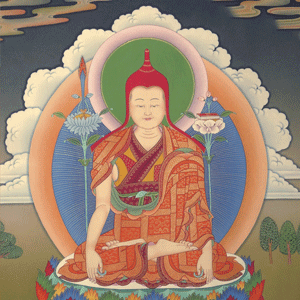 The fourteenth-century master Longchenpa, or Longchen Rabjam, is one of the pillars of Tibetan Buddhism.
The fourteenth-century master Longchenpa, or Longchen Rabjam, is one of the pillars of Tibetan Buddhism.
“The great fourteenth-century yogi Longchenpa said that how we label things is how they appear to be. I decided to experiment with this teaching and see how it applied to my obsession with cleanliness."
Here is the full story from the audiobook read by Claire Foy:
Much of Longchenpa’s writings are for those who have been immersed in Tibetan Buddhist practice and study for a long time, but two excellent starting places are his biography and the first volume of his “Trilogy of Rest”.
The Direct Teachers of Pema Chodron
Chögyam Trungpa Rinpoche

“Trungpa Rinpoche said that the way to arouse bodhichitta was to “begin with a broken heart.” Protecting ourselves from pain—our own and that of others—has never worked. Everybody wants to be free from their suffering, but the majority of us go about it in ways that only make things worse. Shielding ourselves from the vulnerability of all living beings—which includes our own vulnerability—cuts us off from the full experience of life. Our world shrinks. When our main goals are to gain comfort and avoid discomfort, we begin to feel disconnected from, and even threatened by, others. We enclose ourselves in a mesh of fear. And when many people and countries engage in this kind of approach, the result is a messy global situation with lots of pain and conflict.”
The best place to start exploring his teaching is our Reader’s Guide to his works, which include general introductions to meditation, mindfulness, the various traditions of Buddhism, art & poetry, the secular Shambhala teachings, death & dying, and more.
Dzigar Kongtrul Rinpoche
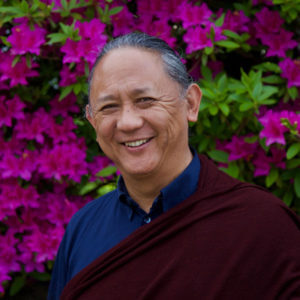
Dzigar Kongtrul Rinpoche is Ani Pema’s current teacher, and she spends much of her time in retreat under his direction. He is based in Colorado, but teaches all over the world.
Unsurprisingly he appears in many of her books, especially the more recent ones. In Welcoming, she writes, “if we get to a point where hardships bring out the best in us, we will be of great help to those in whom hardships bring out the worst. If even a small number of people become peaceful warriors in this way, that group will be able to help many others just by their example. Dzigar Kongtrul Rinpoche is an advocate of this kind of courageous and practical realism. He urges people to train in becoming ‘modern-day bodhisattvas,’ or simply ‘MDBs.’ His students have even designed an MDB baseball cap to inspire themselves and others to move through the world with an altruistic, resilient heart. This work is based on getting to know how things really are and conducting ourselves bravely and creatively within that framework.”
Here she is discussing his recent book, Training in Tenderness.
Khenchen Thrangu Rinpoche
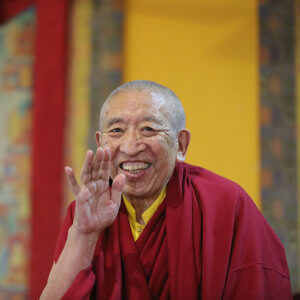
We recently published this Reader’s Guide to the works of Thrangu Rinpoche, which will give you great ideas on where to get started with this incredible teacher. Here is Pema Chödron telling a story about him in Welcoming the Unwelcome (audiobook read by Claire Foy):
$18.95 - Paperback
By: Khenchen Thrangu & Thrangu Dharmakara Translation Collaborative
Dilgo Khyentse Rinpoche
Dilgo Khyentse Rinpoche, who passed away in 1991, was a teacher to an entire generation of lamas, monastics, and lay people from His Holiness the Dalai Lama to nomads in the wilds of Tibet. He was a very important teacher to both Trungpa Rinpoche and Dzigar Kongtrul Rinpoche.
Ani Pema relates, “Trungpa Rinpoche told this story about how he once was sitting in a garden with Dilgo Khyentse Rinpoche, one of his most important teachers. They were just enjoying their time together in the beautiful setting, hardly saying anything, simply happy to be there with each other. Then Khyentse Rinpoche pointed and said, ‘They call that a “tree,”’ and both of them roared with laughter. For me this is a wonderful illustration of the freedom and enjoyment that await us when we stop being fooled by our labels. The two enlightened teachers thought it was a riot that this complex, changing phenomenon, with all its leaves and bark and fragrance, could be thought of merely as a ‘tree.’ As our labels loosen their grip on us, we too will start to experience our world in this lighter, more magical way.”
The story of Khyentse Rinpoche’s life is an amazing tale of dedication, disciple, and devotion and is beautifully told in Brilliant Moon, a combined autobiography and biography, with accounts of him from across the Buddhist world including, Her Majesty the Royal Grandmother of Bhutan, and many of the great masters of the last century. We also have a Reader’s Guide to his works, which are some of the most beloved works we have in print.
Here is Richard Gere, the Dalai Lama, and Mattheu Ricard reflecting on this extraordinary teacher:
$39.95 - Paperback
By: H.H. the Fourteenth Dalai Lama & Dilgo Khyentse Rinpoche & Ani Jinba Palmo & Shechen Rabjam
The Heart Treasure of the Enlightened Ones
$24.95 - Paperback
By: Dilgo Khyentse Rinpoche & Padmakara Translation Group & Patrul Rinpoche
More Teachers and Friends
Tulku Thondup
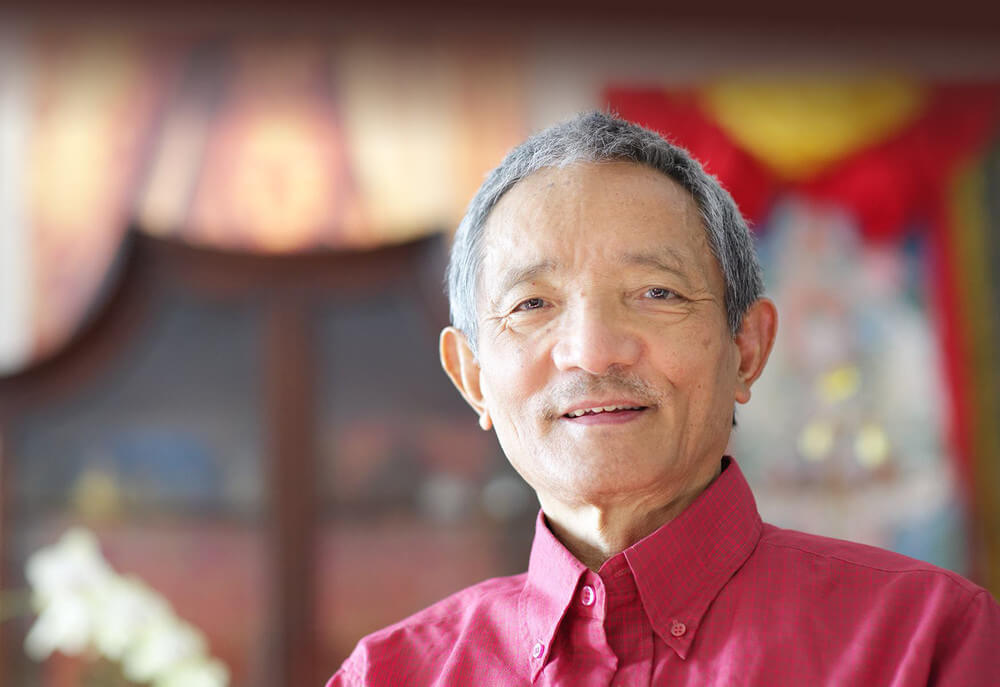
“How do we adopt this counterintuitive attitude when our emotions and neuroses hit us hard, in the painful, nontheoretical way that they do? I have learned a few effective methods, two of which I will share here.
The first method is based on a teaching by Tulku Thondup Rinpoche. When any unwanted feeling comes up, the first step is to feel it as fully as you can at the present moment. In other words, hold the rawness of vulnerability in your heart. Breathe with it, allow it to touch you, to inhabit you—open to it as fully as you currently can. Then make that feeling even stronger, even more intense. Do this in any way that works for you—in any way that makes the feeling stronger and more solid. Do this until the feeling becomes so heavy you could hold it in your hand. At that point, grab the feeling. And then just let it go. Let it float where it will, like a balloon, anywhere in the vast realm of empty space. Let it float out and out into the universe, dispersing into smaller and smaller particles, which become inconceivably tiny and distant.”
Tulku Thondup’s The Heart of Unconditional Loveand The Healing Power of Mind are two excellent starting places to explore Tulku Rinpoche’s extraordinary gift for opening our hearts.
Anam Thubten
Anam Thubten
Ani Pema writes, “Anam Thubten emphasizes that this brave acknowledgment of our ‘flaws’ is not about indulging in feelings of shame or guilt. It is, instead, about ‘not hiding anything from one’s awareness.’ Instead of reacting in one way or another, we can simply choose not to hide anything from our own mind. We can regard all that we observe simply as karmic seeds ripening. Whatever arises in our mind and heart is just our current experience, nothing more or less. Even our good and bad qualities are temporary and insubstantial, not ultimate proofs of our worthiness or unworthiness. They are not inherent to our fundamental nature of basic goodness; they are simply what is. If we learn to work with our experiences in this way, then instead of succumbing to the pull of our old habits, we can stay present with them until they calm down of their own accord.”
His books include No Self, No Problem, Embracing Each Moment, and his latest, Choosing Compassion.
Suzuki Roshi
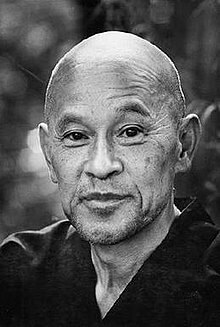
Ani Pema shares this in Welcoming: “As the Zen teacher Suzuki Roshi famously said, ‘In the beginner’s mind, there are many possibilities, but in the expert’s, there are few.’”
This quote comes from the best selling Zen book of all time, Zen Mind, Beginner's Mind. Many other anecdotes and sayings of this remarkable teacher can be found in Zen is Right Here.
His Holiness the Dalai Lama
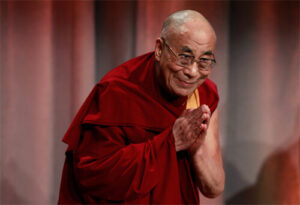
“When His Holiness the Dalai Lama started meeting with Buddhist teachers from the West, they would tell him how their students often expressed self-denigration. Even the teachers often had negative views of themselves. For the Dalai Lama, at first, these words just didn’t compute. Having a bad self-image was completely alien to how he saw himself and others. It was so far away from the open-ended and basically good nature that he knew everyone possessed. It didn’t make sense that people could be so hard on themselves, so judgmental—even to the point of self-hatred.”
Ani Pema goes on to unpack this and show the path forward to the reader.
Here is a Reader’s Guide to over two dozen of the Dalai Lama’s works, including The Core Teachings of the Dalai Lama series.
Bernie Glassman
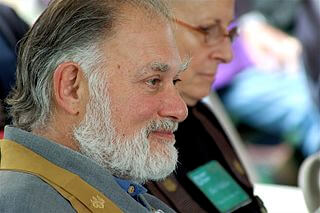
From Kanzeon Zen Center via Wikipedia
Pema writes, “Roshi Bernie Glassman, who spent decades working with homeless people in Yonkers, New York, said ‘I don’t really believe there’s going to be an end to homelessness, but I go in every day as if it’s possible. And then I work individual by individual.’”
Glassman, who passed away in 2019. was a huge figure in the American Buddhist world. He was known for his iconoclastic style and enormous heart, dedicating his life to helping others with cigar perched firmly in his mouth, whether in his collaboration with Jeff Bridges or helping homeless on the streets.
Here are two of his books
Instructions to the Cook describes the innovative business model Roshi Bernie Glassman developed to revitalize a poverty-stricken section of Yonkers, New York. Using his own story as a base, Glassman shows how social engagement can be used as a spiritual practice to promote both personal and societal transformation.
His book Infinite Circle covers three core Zen concepts and how they relate to his community development organizations and the Zen Peacemaker Order.
Matthieu Ricard
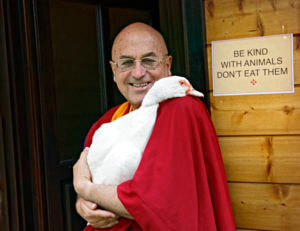
Ani Pema, when discussing the practice of tonglen, says, “Matthieu Ricard, the well-known Buddhist monk and author, was once being tested for compassion by being hooked up to one of those big machines that records all your brain activity. He began by visualizing himself sending rays of healing light to those who are suffering, but the scientists wanted him instead to focus on breathing the suffering in. For that period, he saturated himself. He had just visited an orphanage in Romania where it was so sad to see how the children were being treated. And he’d also recently been in Tibet after an earthquake. So he had a lot of material, which he kept breathing in and breathing in.
From this experience, he said he learned that a person can only take so much. He found that taking on suffering had to be balanced with love and kindness, with the completeness of life. I think that this example illustrates how he approached the excessive risk zone, and realized that if you breathe in the pain, you also have to send out the love. There’s a sense of connecting with both beauty and tragedy—with the delightfulness and upliftedness of life, and with the degraded and cruel part of life.”
He has written books on animal ethics, collections of stories and wisdom from many great masters, and translations of some very important autobiography and biographies.
Ken McLeod
In Welcoming the Unwelcome, Ani Pema wrote, "my friend Ken McLeod wrote Reflections on Silver River, a book that has deepened my understanding of the bodhisattva path considerably".
This book is a translation of and commentary on the 37 Practices of the Bodhisattva, by Thogme Zangpo (see above). She often points to McLeod's book as a superb in her teachings.
He has also translated an incredible text: The Great Path of Awakening: The Classic Guide to Lojong, a Tibetan Buddhist Practice for Cultivating the Heart of Compassion. Here he is discussing that work:
In Closing
We hope this article gives you some great ways to go deeper with many of Pema Chödrön’s main inspirations.
Books by Pema Chödrön
SNOW LION NEWSLETTER ARCHIVE
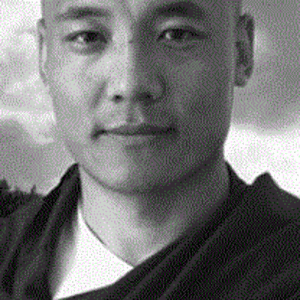
Anam Thubten on the Sudden Beauty and Rest of Enlightenment
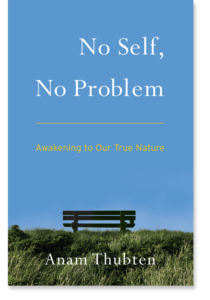
—adapted from No Self, No Problem by Anam Thubten
Books by Anam Thubten

Anam Thubten on Benefits of Falling Apart

There is a bit of a dichotomy here. It’s confusing too because we come to the spiritual-path with a lot of enthusiasm and determination. We are complaining about samsara, our misery, and we are looking desperately for liberation. At the same time, we must remember that samsara is already falling apart. We may wonder how that can be. I have been stuck in it for many lifetimes. This vicious cycle is not falling apart on its own. The question is actually, “Who is the self? Who is the one who is trying to maintain that samsara?” Samsara is really very high maintenance. It costs lots of headaches and heartaches to maintain. Who is this self trying to construct samsara? Who is that person?
—Excerpted from No Self, No Problem by Anam Thubten
Books by Anam Thubten
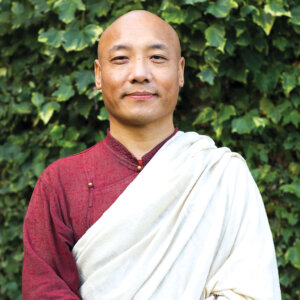
Anam Thubten on Simple Awakening
When awakening happens, there is no longer any desire to become someone other than who we are. Every previous idea of who we are vanishes and along with it the pain, guilt, and pride associated with our body. In Buddhism this is called no self. This is the only true awakening. Everything else is a spiritual bypass. This awakening is what we should be aiming for from the very beginning of being on the path. It will rescue us from falling into unnecessary spiritual traps.
When we are openhearted and ready to drop our previous perceptions of self, then spiritual awakening can happen at any moment. There is a beautiful analogy. Imagine a dark cave that hasn’t been illuminated for a million years. Then one day someone brings a candle into the cave. Instantaneously the darkness of a million years vanishes. Like that, when your true nature is realized there is no longer this “I” searching for anything else. The awakening has nothing to do with our background. It has nothing to do with whether we have been meditating for a long time or not. It has nothing to do with meeting impressive teachers or gurus. It is simply dependent on whether or not we are open to it.
This opening, this receptivity, is basically related to our ability to resist arming the ego with concepts and ideas. A true spiritual path transcends all concepts and belief systems. It is not about reinforcing the mind’s illusion of self as an identity. It is not about being a Buddhist, a saint, or a better person. It is really about deconstructing all of our illusions without any mercy.

It is very important to look into our mind to see what we are looking for, what we are seeking. This is especially relevant when we are going to receive spiritual teachings. When a spiritual teacher impresses us, we might discover that our desire is completely antagonistic to authentic awakening. Perhaps our mind is looking for comfort, for validation, for a spiritual high, or a new set of beliefs. Sometimes our ego convinces us that we are realizing this sense of no fixed self but at the same time we are holding on to another concept like trying to be sacred or spiritual. Holding on to concepts such as “sacred” or “spiritual” while we are working towards transcending self-attachment is very subtle.
Perhaps this sounds like a lot of work, like an arduous insurmountable task. It isn’t when we find the secret ingredient. That is to know that this “I” is a fictitious entity that is always ready to wither away the moment we stop sustaining it. We don’t have to go to a holy place to experience this. All we have to do is simply sit and pay attention to our breath, allowing ourselves to let go of all of our fantasies and mental images. Then we can experience connecting to our inner world.
As we begin to rest and pay attention, we begin to see everything clearly. We see that the self has no basis or solidity. It is a complete mental fabrication. We also realize that everything we believe to be true about our life is nothing but stories, fabricated around false identifications. “I am an American. I am thirty years old. I am a teacher, a taxi driver, a lawyer…whatever.” All of these ideas or identities are stories that have never really happened in the realm of our true nature. Watching the dissolution of these individual stories is not painful. It is not painful to see everything dissolving in front of us. It is not like watching our house burn down. That is very painful because we don’t want to lose everything. Spiritual dissolution is not like that because what is being destroyed is nothing but this sense of false identities. They were never real in the first place.

Anam Thubten on Falling in Love with Truth
Falling in Love with Truth
Adapted from
No Self, No Problem: Awakening to Our True Nature
by Anam Thubten
In Buddhist terminology, truth is called “emptiness” because truth is empty of all illusions. Do not mistake this emptiness for a nihilistic nothingness. Emptiness is the source of all things. Emptiness is the infinite realm of love and compassion. Emptiness is the divine fire that burns all concepts and the holy water that washes away all misery.
Yet from the vantage point of ego, emptiness seems to be the darkness of the unknown, something that threatens the very foundation of our being. But if you simply surrender all of your resistance, you will find that emptiness, or the truth, is your best friend. This friend has never left you and will never abandon you in the future. Once you fall in love with the truth you will have a never-ending affair and all of your longing will be fulfilled.
One of the trickiest things, something that often prevents us from realizing the truth, is the tempting offers and numerous methods for attaining the truth. Most of these are unnecessary, just a way to postpone the final meeting with the truth. For example, we don’t need a telescope to see what is in the palm of our hand. In the same way, the truth is always in front of us and there is no need to go anywhere to find it. However, many of us, in our search for the truth, get caught up in performing empty rituals and engaging in intellectual speculation. Sooner or later, we become exhausted with this search and then naturally glimpse the truth that we have been searching for, for eons and eons.
Through embracing and living the truth, we realize inner freedom, which is the only nirvana to be found. Liberation is the cessation of all mistaken beliefs. Mistaken beliefs become obsessions. Obsessions are ego’s shameless effort and struggle to once again sustain its flimsy existence.
Nirvana is not some kind of beautiful, celestial garden filled with peaches and mangoes, a place where everybody is walking around with beautiful halos. It is not a place where everyone is in a constant state of bliss. It’s not even a transcendent state of mind that we are going to achieve. It is not a beautiful, ecstatic, trancelike state of mind that we can cherish. Rather, nirvana is a great cessation of the separation between us and the truth. It is the mere acknowledgment of what has been the case all along. It is like waking up from a nightmare.
It’s a great relief to discover that nothing has to be done.
Sometimes I like to think about truth in the image of an old and wrathful Buddhist master who grabs us, shakes us, and shouts, “Drop it now!” Truth can be wrathful. Eventually it destroys all of our illusions, no matter how much we cherish them. The closer we get to it, the clearer we see that we have to let all of them go, even the ones that have been with us for a very long time.
